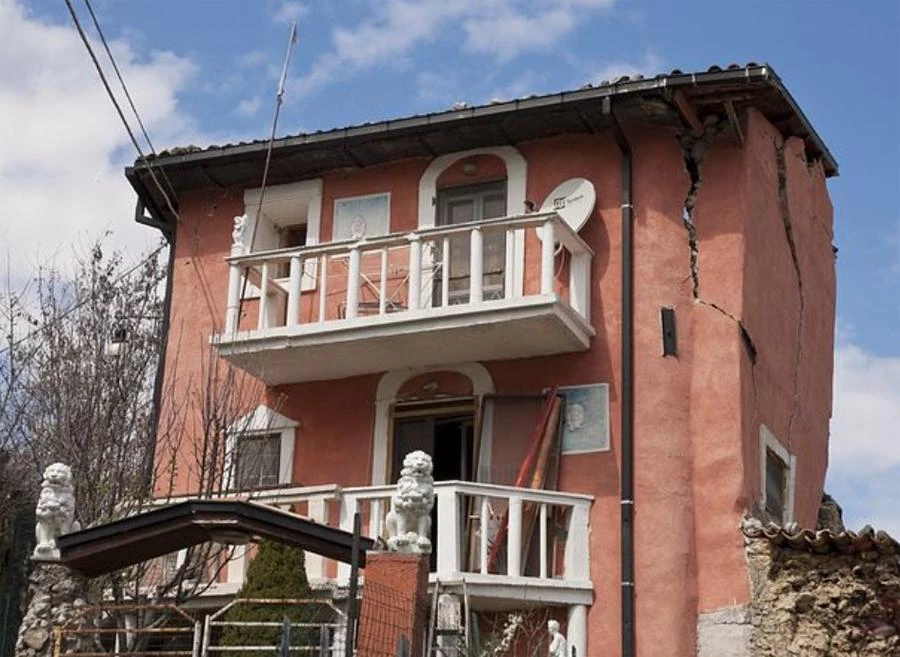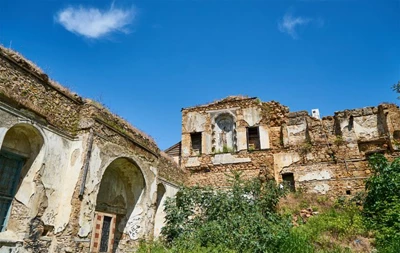Earthquakes don’t kill people; buildings do. The importance of quality control and how it can be streamlined

On September 21, 2021, the world was shocked by the report of a powerful earthquake (magnitude 5.9) that occurred in Victoria in southeastern Australia. The epicenter of the earthquake was located 180 km from Melbourne, the state capital. According to The New York Times, more than 40 residential buildings and auxiliary buildings were destroyed. High-rise residential buildings were rocking for 20 seconds, which caused panic among residents of the city. Residents of high-rise buildings and employees of offices located in them were urgently evacuated.

There was no serious damage in the city. The upper facade of Betty's Burgers & Concrete Co was damaged, fragments of a brick building were scattered along the road. There was also minor damage to other buildings – broken windows, damaged facades, roofs of buildings, etc. Roads, cars, and transmission lines were significantly damaged in some areas. Fortunately, there were no dead or seriously injured from the earthquake this time.
The nature of earthquakes in Australia
The Australian plate, on which the continent is located, is situated far enough from the active border, so earthquakes of the interplate type do not threaten Australia. All the earthquakes occurring here originate inside the tectonic plate. The movement of tectonic plates in the Governor Fault, which occurred at a depth of about 10 km, caused an earthquake in 2021. According to the Mercalli intensity scale, the earthquake was classified as very strong (intensity VII). It is possible that the tremors will be repeated in a few weeks or months, so the authorities of the state of Victoria have declared a state of readiness.
Analysis of seismological data shows that earthquakes with a magnitude of 6.0 occur in different areas of Australia every 6 to 10 years. This time there were no serious consequences. And what will happen next time? Is it possible to prevent serious injury and death of people during earthquakes?
What is the main cause of death during an earthquake?
The eyewitnesses of the earthquake in Melbourne included those who survived the earthquake in Christchurch (New Zealand) on February 22, 2011. Unfortunately, this natural disaster caused victims.
Unlike Australia, New Zealand is located on a fault of lithospheric plates, and earthquakes disturb its tranquility quite often. This happened in September 2010, when the shift of the lithospheric plates at a depth of 10 km led to powerful tremors. The epicenter of the earthquake was only 40 km from Christchurch. Then there were no human casualties, but the buildings of the city were seriously damaged. Many of them did not meet the requirements of seismological safety. Some of them were destroyed, but others did not suffer from external signs, although later it turned out that their design was significantly weakened.
Strong earthquakes are usually accompanied by repetitions. So, it happened this time. A few months later, on February 22, 2011, a second earthquake occurred, which destroyed the city. City blocks instantly turned into ruins. The skyscrapers that resisted the tremors were fraught with danger and became unusable.

The force of the shock this time was slightly less powerful, but the epicenter was only 10 km from the city, and its depth was only 5 km. It was also important that the buildings were severely weakened by the previous earthquake. This time 185 people became victims of the earthquake. They included:
● 115 people died under the ruins of a local TV channel building. This building was constructed according to a project that absolutely did not meet the requirements of earthquake resistance standards.
● 18 people were covered by the wreckage of a 4-storeyed administration building, which was built in the 60s of the last century.
The rest died from injuries sustained from falling fragments of facades, fragments of collapsing buildings. Death overtook them just on the street, in cars, or in public transport.
Ann L. Brower, an associate professor of environmental sciences at the University of Canterbury, was on one of these buses, which was hit by the collapse of the facade at 605 Colombo Street. She was the only surviving passenger on that bus. She was taken to the hospital with multiple fractures. This day turned her life upside down, and not only from a physical point of view.
After analyzing what had happened, she concluded that it was not earthquakes that killed people, it was buildings that did it. The cause of death of people were buildings:
● which were designed and built by unscrupulous engineers;
● which were equipped with non-reinforced decorative elements made of brick;
● which were not equipped with proper structural support;
● which were not examined and reconstructed in a timely manner.
Therefore, after leaving the hospital, Ann Brower took up a detailed study of seismology and the seismic safety of buildings. And 5 years later, the New Zealand Parliament amended the Construction Law, which was called the "Brower Amendment". It provided for a focus on dangerous buildings across the country. The deadlines for the evaluation of such buildings and the elimination of defects were reduced by half (2.5 years were allocated for the evaluation of buildings, 7.5 years – for the correction of defects). In regions with average earthquake risk, this period was reduced from 35 to 17.5 years.
How to minimize the danger of earthquakes
Making amendments to the legislation was not easy for Ann Brower, because a lot of money was needed to implement the changes. It was her contribution to ensuring the safety of citizens. The news of the earthquake in Melbourne forced her to relive the events in which she became a participant more than 10 years ago. She calls on the Government of Australia and the State of Victoria, in particular, to implement legislative reform without waiting for the death of people. At least the simplest precautions should be taken to do this:
● Secure the parapets and chimneys. They are the first to fall and become deadly even with mild tremors.
● Strengthen stone buildings that pose the greatest danger during earthquakes.
● Investigate and strengthen buildings whose construction may have undergone changes during previous earthquakes.
These tips should also be used in other regions that are subject to earthquakes. Of course, these events require investments. However, these costs are nothing compared to the funds that will be needed to rebuild the destroyed city. In addition, timely measures taken will help save people's lives, and this is priceless. Only comprehensive monitoring of the earthquake resistance of buildings will help to avoid the irreparable consequences of an earthquake.
Innovative technologies will help to implement the optimization of building control processes and the correction of identified deficiencies. A construction management platform developed by Fluix will help:
● systematize all collected data on the condition of buildings;
● develop the optimal ways to solve the tasks on the basis of their analysis;
● ensure flexibility and efficiency of each task;
● keep all processes under control.
Working with the platform will save you from a lot of routine processes, allowing you to focus on solving the main tasks.



